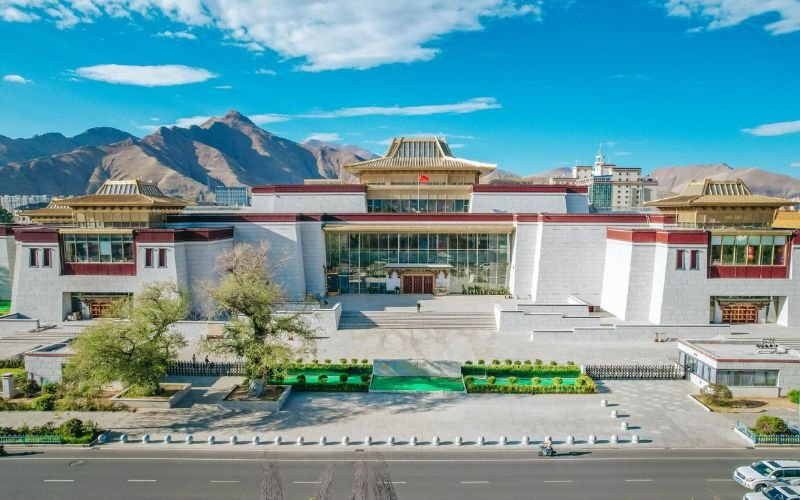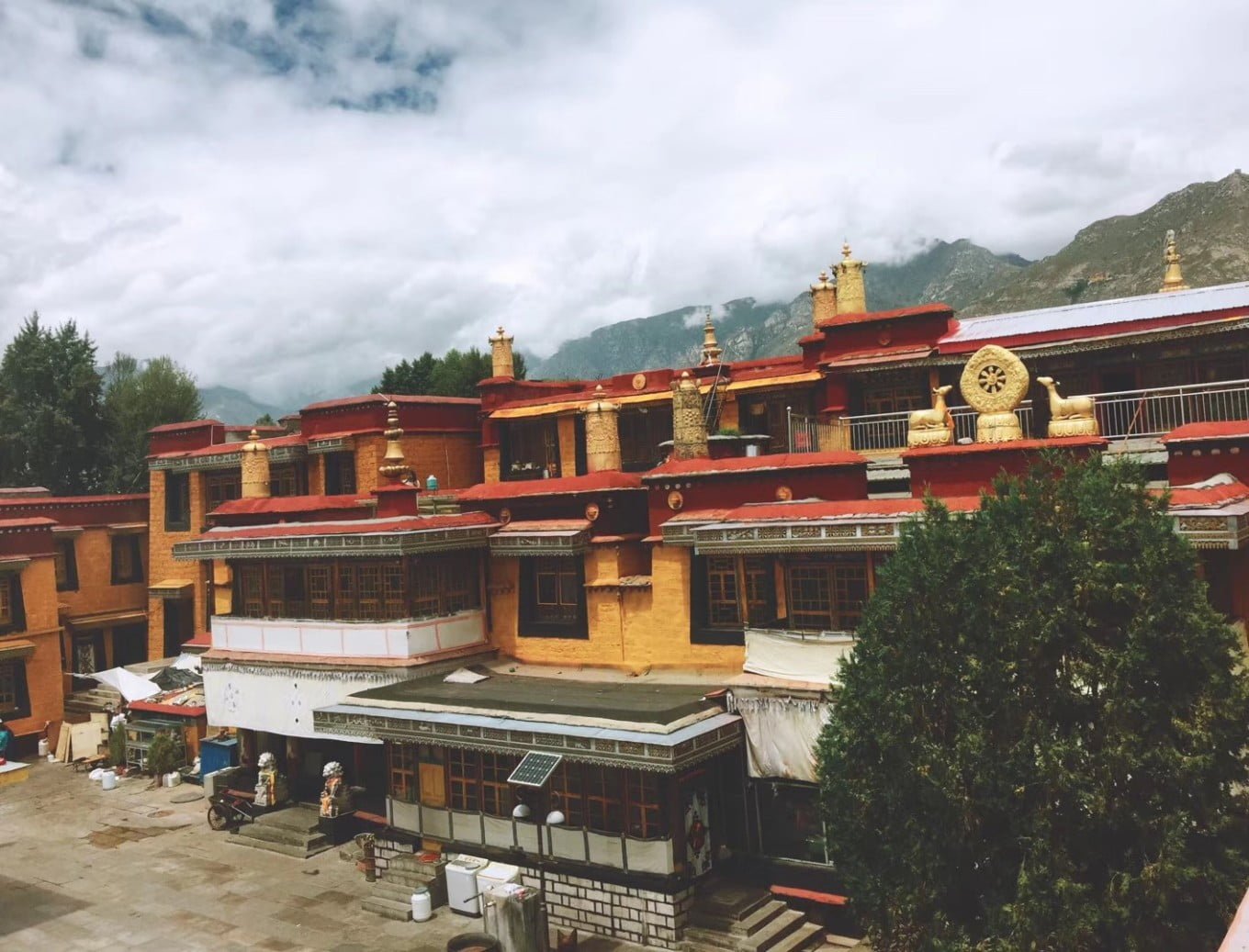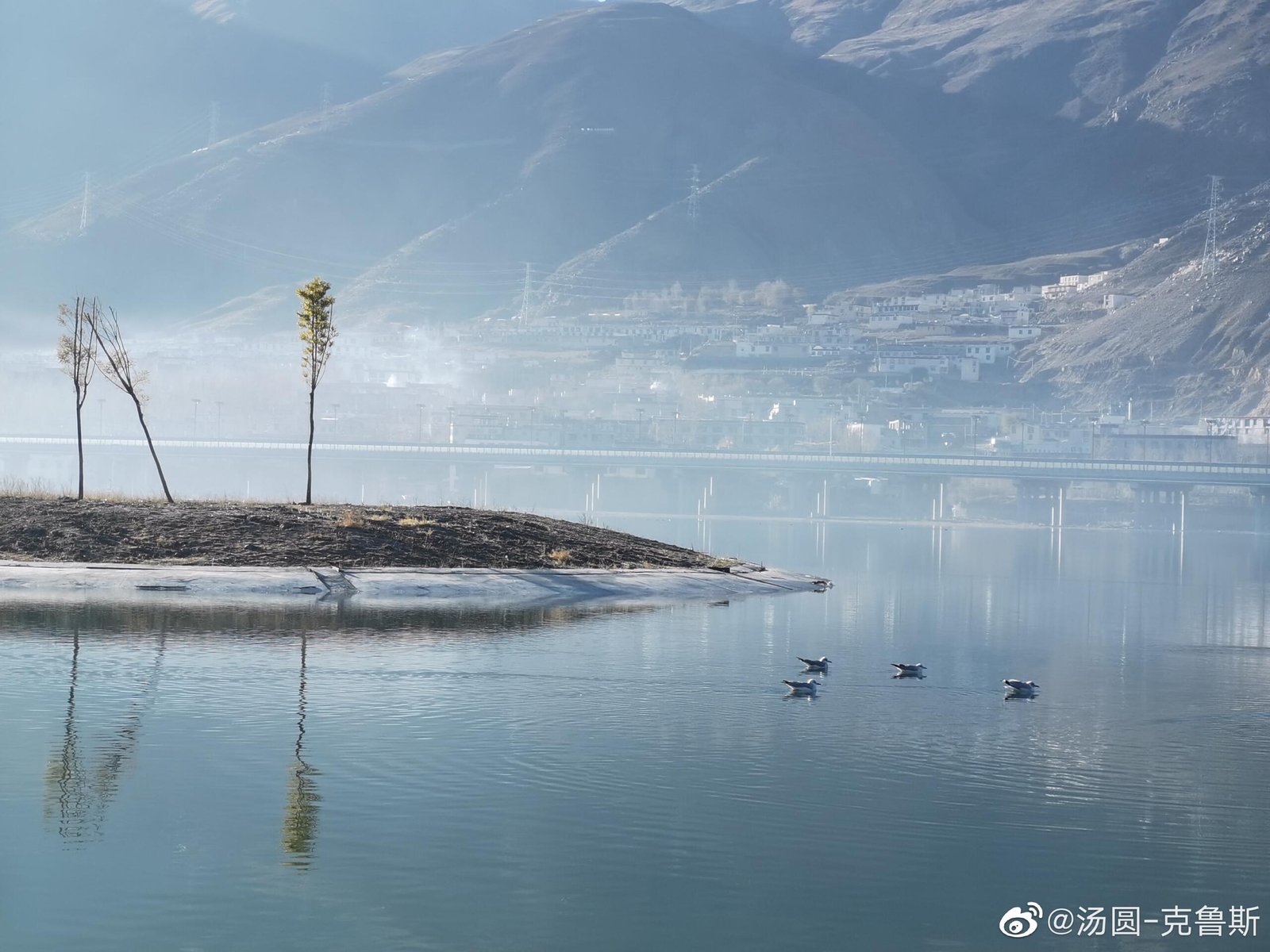Lhasa, often translated as “the place of the gods” in the Tibetan language, is not just any city. It’s a city steeped in over 1300 years of history, serving as the political, economic, cultural, and religious hub of Tibet. Located at the coordinates of 29.6°N latitude and 91.1°E longitude, Lhasa sits on the northern banks of the Lhasa River, a tributary of the Yarlung Tsangpo River, nestled in the central-southern part of Tibet.
The Name Lhasa: A History of Sanctity
The name “Lhasa” carries with it a profound meaning, signifying “holy land” or “Buddha land” in Tibetan. Historical texts have recorded it by various translations, including “Ra-sa” and “La-sa” among others. The city’s origin traces back to the 7th century when Songtsän Gampo, the founder of the Tibetan Empire, moved the capital to this sacred land, uniting various tribes under his rule.
Legend has it that when Princess Wencheng of the Tang dynasty arrived in Tibet, Lhasa was merely a barren landscape. Soon after, the construction of the Jokhang and Ramoche Temples began, laying the foundation for what would become the city’s old quarter. Songtsän Gampo further expanded his influence by building the iconic Potala Palace on Red Hill and other palaces in the Lhasa valley, marking the beginning of Lhasa’s prominence as a distinguished city on the high plateau.
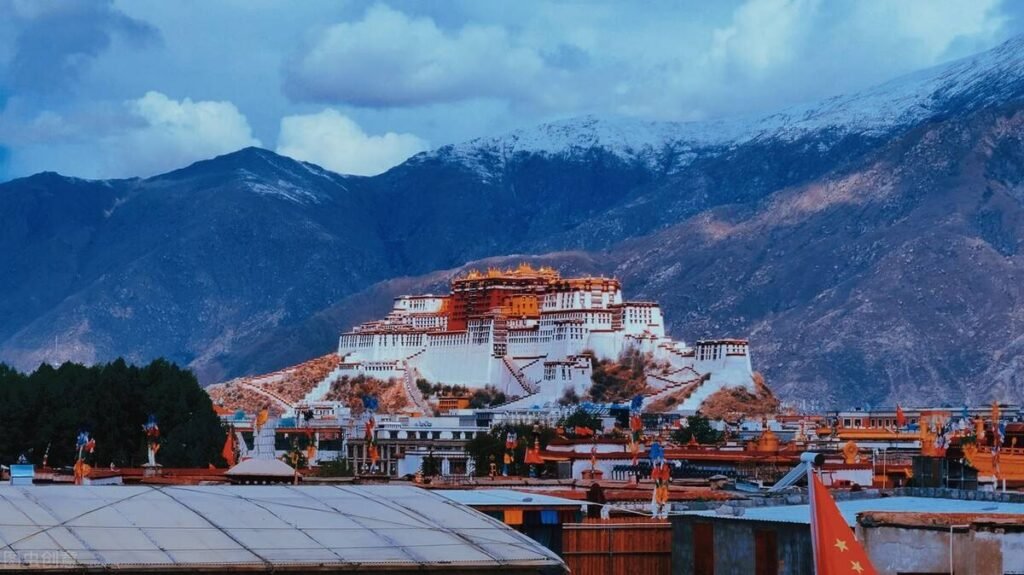
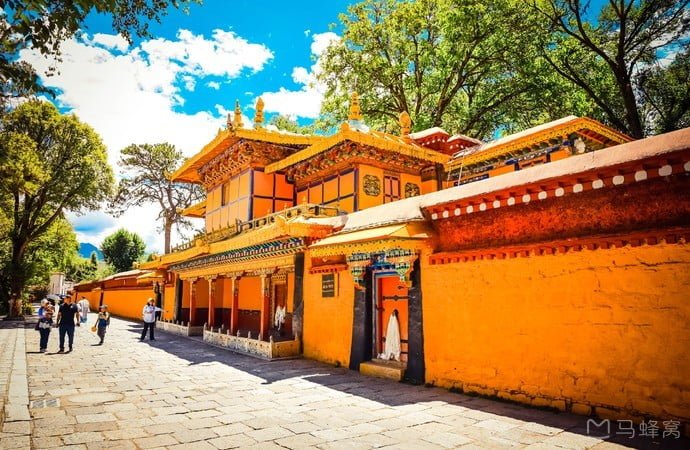
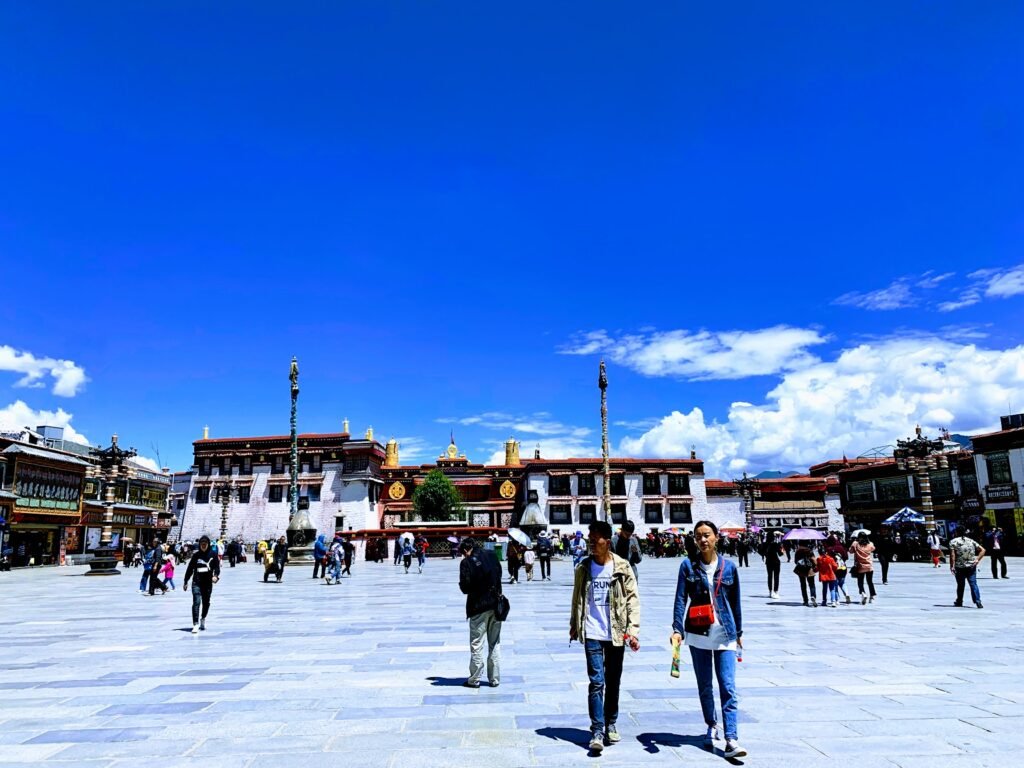
Administrative Divisions and Demographics
Chengguan District, nestled along the central stretch of the Lhasa River, a gradual ascent from the river’s banks to its northern and southern boundaries. The district extends approximately 28 kilometers east to west and about 31 kilometers north to south. It shares its western border with Doilungdêqên District, Dagzê County to the east, and Lhünzhub County to the north.
Positioned at an altitude of 3,650 meters, Chengguan District occupies a total area of 525 square kilometers. Of this, the urban area constitutes 60 square kilometers, marking the region’s developed core. The city government is located on Jiangsu Avenue in the Chengguan district. As of the end of 2022, Lhasa’s registered population was approximately 581,200, with a permanent resident count of nearly 867,891 as of November 1, 2020.
| Name | Tibetan | Chinese | Pinyin |
|---|---|---|---|
| Barkhor Subdistrict | བར་སྒོར་ཁྲོམ་གཞུང་། | 八廓街道 | Bākuò Jiēdào |
| Gyirai Subdistrict | སྐྱིད་རས་ཁྲོམ་གཞུང་། | 吉日街道 | Jírì Jiēdào |
| Jêbumgang Subdistrict | རྗེ་འབུམ་སྒང་ཁྲོམ་གཞུང་། | 吉崩岗街道 | Jíbēnggǎng Jiēdào |
| Chabxi Subdistrict | གྲ་བཞི་ཁྲོམ་གཞུང་། | 扎细街道 | Zāxì Jiēdào |
| Gündêling Subdistrict | ཀུན་བདེ་གླིང་ཁྲོམ་གཞུང་། | 公德林街道 | Gōngdélín Jiēdào |
| Garmagoinsar Subdistrict | ཀརྨ་མ་ཀུན་བཟང་ཁྲོམ་གཞུང་། | 嘎玛贡桑街道 | Gámǎgòngsāng Jiēdào |
| Liangdao Subdistrict | གླིང་ཕྲན་གཉིས་ཀྱི་ཁྲོམ་གཞུང་། | 两岛街道 | Liǎngdǎo Jiēdào |
| Jinzhu West Road Subdistrict | བཅིངས་འགྲོལ་ནུབ་ལམ་ཁྲོམ་གཞུང་། | 金珠西路街道 | Jīnzhū Xīlù Jiēdào |
| Ngaqên Subdistrict | སྣ་ཆེན་ཁྲོམ་གཞུང་། | 纳金街道 | Nàjīn Jiēdào |
| Togdê Subdistrict | དོག་སྡེ་ཁྲོམ་གཞུང་། | 夺底街道 | Duóde Jiēdào |
| Caigungtang Subdistrict | ཚལ་གུང་ཐང་ཁྲོམ་གཞུང་། | 蔡公堂街道 | Càigōngtáng Jiēdào |
| Nyangrain Subdistrict | ཉང་བྲན་ཁྲོམ་གཞུང་། | 娘热街道 | Niángrè Jiēdào |
Geography and Climate: A City Above the Clouds
Lhasa’s terrain slopes from east to west, featuring a strip-like distribution. With an elevation of 3,650 meters, it stands as one of the highest cities in the world. The central and southern parts consist of the middle reaches of the Lhasa River Valley, boasting flat landscapes.
The climate in Lhasa is characterized by a temperate, semi-arid plateau monsoon climate, offering more than 3,000 hours of sunshine annually and earning it the nickname “the Sunlight City.” Rainfall ranges from 200 to 510 millimeters, mainly occurring between June and September, often in the form of nighttime showers. Temperatures can vary greatly, with highs reaching up to 29°C and lows dipping to -14°C. The thin air and significant temperature differences create a unique weather pattern, with dry and windy conditions prevalent in the winter and spring, and a frost-free period lasting 100 to 120 days each year.
Lhasa: A Modern City Rich in Traditional Tibetan Products
Today, Lhasa has transformed into a burgeoning modern city, boasting a range of industries from electricity and mining to construction materials, printing, textiles, machinery repair, food processing, and handicrafts. With over 10,000 commercial outlets, Lhasa offers a rich variety of goods, complemented by advanced communication facilities. The city is well-equipped in terms of scientific research, education, healthcare, cultural and sports facilities, and financial services, making it a comprehensive urban center.
Celebrated Traditional Tibetan Products
Among the most famous traditional products of Lhasa are souvenirs, artistic items, and Tibetan medicine, highly sought after on the international market. These include ritual objects, Thangkas, carpets, mats, aprons, wooden bowls, traditional knives, and gold and silver jewelry. These items not only reflect the rich cultural heritage of Tibet but are also in high demand globally for their unique craftsmanship and cultural significance.
Tibetan Medicine: A National Intangible Cultural Heritage
In 2006, the traditional methods of mercury purification and the compounding techniques of Tibetan medicine, particularly those involving the Rinchen Trangjor formula, were inscribed on the National Intangible Cultural Heritage list. These practices represent the essence of Tibetan medicinal preparation, encapsulating the entire spectrum of traditional processing techniques. They reflect the unique Tibetan approaches to cognition, diagnosis, and pharmacology.
Travel Tips for Lhasa Visitors
For those looking to purchase souvenirs in Lhasa, Barkhor Street is the prime destination. Tourists interested in ritual objects can also visit the nearby Jokhang Temple to have their items blessed by Lamas. While artistic items are abundant throughout Lhasa, it’s worth noting that prices within tourist spots tend to be higher. For Tibetan medicine, the best place to shop is the pharmacy department of the Tibetan hospital located diagonally opposite to the Jokhang Temple Square.
In summary, Lhasa merges its rich cultural traditions with modern advancements, offering a unique blend of the past and present. Its traditional products and Tibetan medicine not only serve as a testament to its rich heritage but also play a vital role in its economy and cultural preservation.
Exploring Lhasa: A Guide to Travel and Transportation
Lhasa, the heart of Tibet, is accessible through air, road, and rail, making it the primary gateway for travelers venturing into this mystical land. Traditionally, most visitors preferred flying to Lhasa from major cities like Chengdu, Xi’an, Chongqing, and Shangri-La, enjoying the convenience, safety, and time-saving aspects of air travel.
However, since July 2006, an additional travel option has become popular: the scenic train journey to Tibet. Direct train services from Beijing, Chengdu, Chongqing, Xining, Lanzhou, Shanghai, and Guangzhou to Lhasa offer travelers stunning views along the way. The most challenging yet visually rewarding route is by road, with five main highways leading into Tibet: the Qinghai-Tibet, Sichuan-Tibet, Yunnan-Tibet, Xinjiang-Tibet, and China-Nepal highways.
Air Travel: Gateway to Lhasa
Lhasa Gonggar Airport, located in Gonggar County, Shannan, about 85 kilometers from Lhasa and at an elevation of 3569.5 meters, is the main airport serving Tibet and a hub for China International Airlines. As of the summer and fall of 2023, it could handle up to 180 flights per day, including new routes to Xichang, Qianjiang, Huai’an, Lianyungang, and Dingri. Chengdu, Mianyang, and Xi’an are among the cities with the highest daily flight volumes to Lhasa.
Over ten airlines operate in Tibet, offering more than 50 routes, including one international route, connecting over 30 cities. This network centers around Lhasa, with important nodes in Changdu and Linzhi, making Chengdu and Chongqing key entry points to Tibet.
Travel Tips Flights travel:
- Late August sees a peak in travel due to Tibetan students heading to the mainland for school, particularly around the Shoton Festival, making flight tickets out of Tibet scarce. Remember to book your tickets in advance!
- The tourist high season from June to September sees a surge in travelers and potentially additional flights, so it’s wise to confirm your flight details before departure.
Road Travel: A Closer Look at Tibetan Life
Traveling by long-distance bus offers an intimate glimpse into the lives of the local Tibetan population. A comprehensive road network centers around Lhasa, extending throughout the region with five national highways, 15 main roads, and over 300 secondary roads.
- Qinghai-Tibet Highway: This highway, part of National Highway 109 from Xining, Qinghai to Lhasa, Tibet, stretches 1,999 kilometers and is the world’s highest and longest asphalt road. It’s also the safest and most reliable route into Tibet, carrying over 80% of goods into the region. Travelers on this road witness diverse landscapes, including grasslands, salt lakes, deserts, and mountains.
- Sichuan-Tibet Highway: Starting in Chengdu, Sichuan, and ending in Lhasa, Tibet, this highway is part of National Highway 318 and is known as “China’s most beautiful scenic route.” The road splits into northern and southern routes at Xinduqiao, with the southern route known for its breathtaking scenery despite its more challenging conditions, including landslides and mountainous terrain.
Navigating Through Tibet: The Roads Less Traveled
Yunnan-Tibet Highway: A Scenic Route Through Diverse Cultures
The Yunnan-Tibet Highway, completed in 1974 and stretching 1625 kilometers, connects the southern end of the Sichuan-Tibet Highway to the Kunming-Bangkok Highway. This route, once a part of the ancient Tea Horse Road, is known for its relatively low altitude compared to other national highways in the region. It passes through the Zhongdian Plateau and the Hengduan Mountains, offering travelers breathtaking high mountain and deep valley views. Despite the challenging road conditions, its mild climate, beautiful landscapes, and the blend of multiple ethnic cultures with the breathtaking scenery of northwestern Yunnan make it a colorful journey. However, travelers should be cautious of landslides and mudslides during the rainy season.
Xinjiang-Tibet Highway: The Highest Road in the World
The Xinjiang-Tibet Highway, also known as the G219, spans 2841 kilometers from Yecheng in Xinjiang to Lhatse in Tibet, extending further to Purang. Crossing over mountain passes like the Jieshan Daban at 6700 meters and the Kudengnibu at 5432 meters, this route features vast Gobi deserts and perennial snow-capped mountains, making it the highest highway in the world. The best time to travel this road is between July and August when the landscape reveals the stunning beauty of the Karakoram and Kunlun Mountains, high-altitude lakes, and diverse wildlife.
China-Nepal Highway: A Link Between Cultures
The China-Nepal Highway, stretching over 900 kilometers from Kathmandu, Nepal, through the Friendship Bridge at Zhangmu into Tibet, and then to Lhasa, offers travelers relatively good road conditions and scenic views. This route is particularly popular among foreign tourists traveling between Tibet and Nepal, providing views of the majestic Himalayas along the way and the chance to explore Tibet’s second-largest city, Shigatse, before reaching Lhasa.
Road Travel Tips:
- In recent years, self-driving tours into Tibet have become increasingly popular. These journeys require thorough preparation for various emergencies, testing the traveler’s wisdom and will but rewarding them with immense joy and rich experiences. Chains are essential for winter travel.
- Over the past two decades, from 1994 to 2022, transportation in and out of Tibet has greatly improved, making the once daunting journey into Tibet a thing of the past and significantly easing travel difficulties.
The Qinghai-Tibet Railway: An Eco-Friendly Journey to the Roof of the World
The Qinghai-Tibet Railway, extending 1963 kilometers from Xining to Lhasa (with segments from Xining to Golmud and Golmud to Lhasa), began trial operations on July 1, 2006, and officially started on July 1, 2007. Crossing natural reserves like the Hoh Xil, Sanjiangyuan, and Qiangtang, this railway is celebrated as China’s first “environment-friendly railway,” providing a safe, fast, and comfortable journey over 4000 meters above sea level for 965 kilometers.
Additionally, the Sichuan-Tibet Railway, totaling 1838 kilometers, includes segments from Chengdu to Kangding (opened in December 2018), Kangding to Linzhi (under construction), and Lhasa to Linzhi (opened in June 2021). The Lhasa to Shigatse Railway, which began operations in August 2014, stretches 253 kilometers, taking passengers through stunning gorges and the vibrant landscapes of Tibet’s southwest.
Travel Tips:
- The Golmud to Lhasa segment of the Qinghai-Tibet Railway features 45 stations, including 9 scenic viewing stations, with 8 manned stations for boarding. While enjoying the breathtaking views from the viewing platforms, travelers are advised to refrain from sudden movements to ensure safety.
Lhasa’s Golden Travel Routes: Exploring Tibet’s Heart
Lhasa has unveiled six major travel routes, collectively known as the “Golden Travel Routes.” These routes encompass all the major attractions and opened areas within Tibet, offering travelers a comprehensive glimpse into the region’s breathtaking landscapes, rich culture, and unique traditions.
The Heartland of Tibet Tour
This circular journey, also referred to as the “Golden Triangle Tour,” spans approximately 1000 kilometers, starting and ending in Lhasa. It covers counties like Qushui, Gonggar, Zhanang, Sangri, Zêtang, Gacha, Lang County, Milin, Nyingchi, Gongbo’gyamda, Mêdog, and Dagzê. This route showcases the stunning natural beauty of Tibet and the traditional lifestyles of the Monpa and Lhoba peoples, offering a deep dive into Tibet’s diverse cultural tapestry.
Lhasa to Nagqu Route
Spanning 326 kilometers, this route can take between 4 to 6 hours by car, passing through Doilungdêqên and Damxung counties. The journey reveals Tibet’s pastoral beauty, with lush grasslands and herds of yaks and sheep dotting the landscape, presenting a serene and picturesque experience.
Lhasa to Shigatse Route
Travelers can choose between the southern route, covering 340 kilometers via Gampa La Pass, Yamdrok Lake, Lhoka, and Gyantse County, or the northern route, a shorter 228 kilometers via Nyemo and Rinbung counties. Shigatse, known for its rich history, developed culture, and strategic location, is one of Tibet’s most attractive destinations.
Lhasa to Nyingchi Route
This 406-kilometer journey takes travelers through Dagzê and Mêdog counties, offering views of the Yarlung Tsangpo Grand Canyon and the recently accessible Mêdog County. The route is famed for its stunning natural landscapes, unique cultural sites, and the mystique of its numerous deity worships.
Lhasa to Shannan Route
A 160-kilometer trip along the Yarlung Tsangpo River through Zhanang and Gonggar counties leads to Shannan, the cradle of Tibetan farming civilization. This area boasts significant historical sites, including Tibet’s first agricultural fields, king, palace, monastery, and the origins of Tibetan opera, enriching the cultural depth of any visit.
Lhasa to Ngari Route
Starting from Lhasa, this route heads to Shigatse, then Lhatse, and diverges into two paths towards Ngari: the northern route (1760 kilometers) through Coqên, Gar, and Ge’gyai to Shiquanhe, offers high altitudes with fewer attractions but possible sightings of Tibetan antelope and wild donkeys; the southern route (1190 kilometers) leads to the sacred Lake Manasarovar and the revered Mount Kailash through Saga and Zhongba, continuing south to Purang and then to Zanda, reaching Shiquanhe. Ngari, known as the “roof of the world’s roof,” is a spiritual hub for ancient Bon traditions and a popular pilgrimage destination.
Travel Tips:
The best time to visit Lhasa and its surroundings is during the summer and autumn when the weather is warm and moist, with scenic beauty at its peak. The conventional travel season, marked by nightly rains that refresh the landscape and a pleasant climate in July and August, starts around the May Day holiday, signaling the beginning of an ideal period for exploration.
Each route offers a unique perspective on Tibet’s vast landscapes, historical depth, and cultural richness, providing unforgettable experiences for every traveler venturing into the heart of this ancient land.


